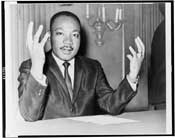Sightline Flashcards and our online strategic communications tools focus on words, messages, and strategies that emphasize shared values.
Why? In the domains of policy, science, number crunching, and data analysis, we have been trained to leave our values at the door. But when we do, our messages are less likely to be absorbed and our motivations less likely to be understood. Indeed, when we connect with people on the level of shared values we underscore our common ground rather than partisan differences. When we articulate our values with conviction and confidence, our words about policy solutions not only grab people’s attention, but draw them in and have greater potential to build their trust.
Speeches, articles, and calls to action that are grounded in values infuse our work with power and meaning and ensure that our chorus of voices is consistent and honest. Expressing our values paves the way for all the work we do to effect positive change.
According to University of Washington communication scholar, author, and political consultant David Domke, “values communication” is the “glue that holds social movements together.”
Domke cites Martin Luther King, Jr. as a clear example—a leader who built a powerful movement by bringing together diverse groups of people by calling on the basic values they shared. Not every cause has a charismatic public figure—an Abe Lincoln or Dr. King—to create the glue, but that’s all the more reason to do as they did and build our communications strategies around the values we stand for.
Here are several reasons why it’s important:
- When we talk about values, we connect with people, we find common ground, and we build consensus. Even like-minded people might disagree on the details of proposed legislation or how to achieve it. But those same people can find common ground when it comes to principles like liberty, opportunity, equality, family, and leaving a legacy we can be proud of. When it comes to our guiding values and principles, we can find consensus—and consensus at this level can open doors—and minds—to more fruitful discussions about policy.
- When we speak of our values, we speak a common language. Everyone, from the homeless to homemakers, from farmers to heads of state, expresses their experience of the world through the language—or lens—of their values—words like family and responsibility. We express our values with everyday vocabulary. Connecting to our audiences through words, images, symbols, and stories grounded in values helps make solutions accessible and relevant to people’s busy lives.
- Values resonate in our hearts, minds—and gut. Author, psychologist, and political strategist Drew Westen has said that in politics, when reason and emotion collide, emotion invariably wins: “We do not find policies worth debating if they don’t touch on the emotional implications for ourselves, our families, or things we hold dear.” Values, in other words, not only work at the level of the mind, they also inform the emotional workings of our “hearts” and manifest as gut instincts.
- Stating our values clearly and consistently gives our words authenticity. When we talk about what we stand for—the values that guide our lives and our work, the principles we live by and pass on to our children—our words are marked by authenticity. As cognitive linguist and political advisor George Lakoff writes, “A position on issues should follow from one’s values, and the choice of issues and policies should symbolize those values.”
Telling our stories
“The way in which the world is imagined determines at any particular moment what men will do. ”
– Walter Lippmann, Public Opinion, 1921
As humans catalog information, past experiences, and perceptions, it’s natural to simplify our complex realities into stories or metaphors we can easily and quickly sort and access.
For example, we might think of the nation like a family with a “head” and dependents, a budget and chores. We sometimes call the press the “watchdog” of government. We might think of a city as a humming beehive or even as a living body with a heart and systems for circulation, waste, energy.
These shortcuts help us deal with the vast amount of information stored in our brains—and help us sort new information as it comes in. Sometimes we’re conscious of our default frames, but most of the time they are automatic to the extent that they register in our minds as common sense—for better or for worse.
These frames or mental shortcuts structure and define our social institutions and interactions. They also define issues—characterizing a problem, identifying the actors involved, and dictating the range of solutions we recognize as possible.
When activity or business at a city’s “heart” fades, for example, we feel the city needs resuscitation, or literally—revitalization. Our spectator-sport relationship to weather—an unpredictable force that’s beyond our control—may inhibit our visualization of workable solutions for climate change. To imagine new kinds of solutions, we often need to shift our frame—or the pictures we paint with our words.
The folklore, mythologies, and stories we tell about our country and our communities also help define us as individuals and groups. From “Founding Fathers” to cyberspace “Netizens,” our very identities are wrapped up in the narratives we tell and retell—as Americans, as Canadians, as members of a tribe, a family, or members of a faith community. Narratives that evoke our shared values, shared histories, sense of community, or shared emotions and experiences provide a structure upon which policy solutions can connect to people’s lives and our collective identities as groups.
Facts matter—no question about it. But, as the language scholars at FrameWorks Institute insist, “facts derive their significance through the stories that weave them together. Numbers alone often fail to create ‘pictures in our head.’”
The stories we tell are important; as are the words we choose, the symbols we evoke, and the metaphors we draw on to tell them. Our stories, told well, define our priorities and enable us to imagine new possibilities for solutions. Finding common ground at the level of values opens new audiences to new ideas or new ways of thinking.
See also:
Flashcard: The Economy as a Human-made and Maintained MACHINE
Flashcard: Understanding the “Political Brain”: A Gut-Check Guide










